Table of contents
What is Garlic Granules ? Garlic ( Allium sativum ), granulated (granules), consists of fine grains of dried garlic with a loose consistency. Garlic powder is ground about as finely as flour. Dried garlic consists of 2-3 mm cubes that are suitable for use in a spice grinder.
Use in the kitchen:
Garlic substitutes such as garlic granules (granulated garlic), garlic powder, garlic salt or diced garlic can be used like fresh, raw garlic . After drying, garlic is 5 to 10 times more concentrated than the fresh product. How much garlic powder is equal to one clove? A heaping teaspoon of garlic granules is equal to about one clove of garlic, which also answers this question: How much garlic granules is equal to one clove of garlic?
Granules contain fine grains, which are more suitable for solid foods. The garlic powder conveniently dissolves - and therefore does not interfere with salad dressings or soups. The garlic products mentioned have a characteristic smell and a mild to sweet taste. Raw garlic (Knobli) tastes much more intense and sharper than the dried or cooked alternative and is also healthier because essential substances cannot escape. When whole garlic cloves are marinated in oil or brine, the substances are retained and only the spiciness decreases.
Garlic and garlic products harmonize with almost all spices. Spicy Mediterranean herbs such as wild garlic and chives go well with salty dishes. Herbs from Provence such as thyme , marjoram , oregano , rosemary , savory , tarragon , basil , fennel , sage , bay leaves , lavender and chervil also harmonize excellently. Basil and garlic are a dream couple.
All garlic products are particularly suitable for savoury dishes, such as spinach, vegetable soups, potato soups, tomato soups, green salads, tomato salads and mushroom dishes. Dips, sauces, dressings, vinaigrettes or pestos always benefit from a hint of garlic.
In India, Thailand, etc., garlic is used in most curries and masalas (Indian spice preparations) and in the Orient it is often used in vegetable pastes, casseroles and stews. A traditional herb bundle with garlic and about a dozen herbs from French cuisine is called a bouquet garni. In Spain and probably also in South America, people know "aioli", in France "rouille" and almost no Italian pasta is made without garlic.
For raw food, fresh garlic is used, and if possible, organic quality, rather than a processed product. Freeze-dried garlic can also be raw. To do this, the water contained in it is removed under vacuum after freezing.
Vegan recipe for crispbread with garlic granules:
Ingredients: 100 g cornstarch , 4 tbsp sesame seeds, 2 tbsp linseed , 2 tbsp sunflower seeds , 2 tbsp pumpkin seeds , 3 tbsp rapeseed oil , ½ tsp coarse sea salt , ½ tsp paprika powder , ½ tsp garlic granules, ½ tsp ground caraway , 150 ml boiling water .
Preparation: Put all the dry ingredients in a bowl and pour boiling water over them. After mixing, let it rest for about 10 minutes. Spread the thick mixture on a baking tray lined with baking paper. Cover with a new sheet of baking paper and roll out with a small hand roller. Remove the top baking paper and cut the mixture into the desired size with a pizza cutter or knife. Bake in a preheated oven at about 150 °C for about 45 minutes. After cooling, break into pre-cut pieces and store in a container that can be sealed tightly.
Vegan recipes with garlic granules can be found under the note: " Recipes that have the most of this ingredient ".
| Not only vegans or vegetarians should read this: Vegans often eat unhealthily. Avoidable nutritional mistakes . |
Shopping - where to buy garlic granules?
Garlic granules or garlic powder are available in all standard supermarkets such as Coop , Migros , Denner , Volg , Spar , Aldi , Lidl , Rewe , Edeka , Hofer etc. Often packaged in spice mills or screw-top glass jars or in small paper bags. Organically produced garlic substitutes can be found in selected (organic) supermarkets (e.g. Denn's Biomarkt), and definitely in health food stores, drugstores or online shops. Garlic granules are sometimes also available with salt. Preservatives are rarely included, but reading the list of ingredients is still advisable. Make sure the product is organic.
"Make your own garlic granules" - Your own preparation (recipe):
Homemade garlic powder - this is how you can granulate garlic: After peeling, cut the garlic cloves into evenly thin slices or small cubes. A garlic grater or ginger grater or the popular garlic press are also suitable. Some professional chefs advise against the latter because the product oxidizes and takes on a bitter taste if it is in contact with oxygen for too long. Recent studies also show that crushing or pressing releases more allicin, the particularly healthy ingredients in garlic. 1 In any case, remove any green shoots beforehand.
The garlic press is more suitable for pastes, e.g. for a dip, pesto or salad dressing. However, for large quantities, this is the quicker method.
Garlic is first cut lengthways and then crossways on a wooden board that is only used for fresh things. A large, sharp knife or a cleaver is suitable as a cutting instrument. Even a knife can take on the garlic taste and pass it on to other foods if it is then used without washing it properly. If garlic turns blue or green when cut, this is due to chemical reactions between amino acids and sulphur compounds; these are completely harmless. 2
When producing garlic granules, the food industry tries to preserve the alliin-alliinase system and prevent any further reaction of allicin by removing water. This is done by quickly cutting the garlic into thin slices of around 3-5 mm and drying it immediately. With a dehydrator, you can set the temperature precisely and try to maintain raw food quality (under 42 °C). In an oven, the temperature can usually be set to a minimum of 50 °C. Some also dry at around 60 °C. The time depends on the device and the temperature, but is at least 5 hours. For the oven method, you clamp a wooden spoon in the door to let the moisture escape. If the slices or cubes are brittle, the garlic is completely dried. The garlic can now be ground into fine garlic powder using a mortar, blender or spice mill.
Storage:
Store homemade organic garlic powder in a clean, dry screw-top jar. If stored airtight and in the dark, the organic powder will last for several months. Although garlic powder or granules can be kept for up to a year, they lose their aroma and flavor if stored for longer periods. Purchased garlic powder or garlic granules are often packaged in small paper bags. To extend the shelf life and preserve the aroma, we recommend transferring the powder or granules to a sealable glass or plastic container.
Garlic granules: Ingredients - nutritional value - calories
Garlic powder or garlic granules contain around 331 kcal per 100 g. The fat content is very low, most of the energy comes from carbohydrates (73%). Proteins make up around 17%.
Since you only eat a small amount of garlic every day, the vitamins and minerals do not play a major role. However, 100 g of dried garlic, with 1.7 mg, covers the daily requirement of vitamin B 6 (pyridoxine) . Pistachios or bay leaves have the same value. Yeast products such as yeast (2.9 mg/100g) or brewer's yeast (4.4 mg/100g) are very good sources of vitamin B 6. This water-soluble vitamin is involved in many enzymatic reactions and also plays an important role in protein metabolism. 3
In dried garlic granules or garlic powder (organic?), the macronutrient potassium is noteworthy at 1,193 mg/100g. Unpeeled hemp seeds are very similar at 1,200 mg/100g. 100 g of soybeans almost cover the daily requirement at 1,797 mg/100g. Dried herbs have significantly more potassium, such as dried parsley (2,683 mg/100g) and dried basil (2,630 mg/100g). 3 In addition to regulating the osmotic pressure in the body's cells, potassium is also responsible for cell growth. In addition, the essential element regulates blood pressure and the acid-base balance in the body. With a balanced, vegan diet, you get enough potassium.
Phosphorus is also an essential element and garlic powder contains a good amount of 414 mg/100g. Walnuts have exactly the same value. Chia seeds (860 mg/100g) or linseed (642 mg/100g) are particularly suitable for meeting the need for phosphorus from healthy foods. 3
Garlic granules (garlic powder) also contain copper , manganese and selenium ; for details please read the nutrient tables at the bottom of the text.
The allicin contained in garlic, a conversion product of the non-proteinogenic amino acid alliin, is responsible for the typical smell in fresh products. Our body converts it into hydrogen sulphide through the red blood pigment. Any form of heating reduces the allicin content, as it is very unstable. The sulphides have an antimicrobial and anti-inflammatory effect, thus preventing infectious diseases and helping to combat them. They are classified as secondary plant substances.
Allicin is also found in onions , where it has an even more lachrymal-inducing effect when the raw product is cut. Dried garlic powder contains about 0.5 to 2.5% allicin and sulfur compounds such as scorinins (thioglycosides) and the intact enzyme alliinase. In addition, there are glutamyl peptides, steroid and triterpene saponins (eg alliospirosides, sativosides), lectins, flavonoids and polysaccharides (fructans).
The complete ingredients of garlic granules, the coverage of the daily requirement and comparison values with other ingredients can be found in our nutrient tables in the CLICK FOR under the ingredient picture.
Garlic smell: What can you do about it?
After consuming garlic or garlic products, people who have not eaten them in particular smell the sulphur-containing allicin on other people's breath. Fresh garlic has a much more intense effect than dried products.
What really helps against garlic breath? A good vegan remedy for neutralizing garlic smell is said to be the natural green dye chlorophyll. It is recommended to simply chew fresh herbs such as parsley , sage or mint . In Asia, ginger or green cardamom is recommended. Whether chlorophyll or products made from it (capsules) really help has not been scientifically proven. Although research in this area began in the 1950s, it was not pursued further. In any case, the smell of urine or intestinal excretions could not be influenced with chlorophyll. 4,5
The skin also releases these odorous substances. Both vary greatly depending on the person and the garlic product (whether cooked or not). Although physical sweating helps to get rid of the odor through the skin, it takes about 20 hours for the body to completely break down the substances. Small amounts of garlic have only a minimal effect on body odor.
To neutralize the smell on your hands, use salt with lemon juice , vinegar or baking soda . Then rinse your hands thoroughly with lukewarm water.
Health aspects - effects:
The allicin contained in garlic has an antibiotic and antibacterial effect. It is also said to have a vasodilating, relaxing effect, which is also said to prevent thrombosis. 6 Ingredients in garlic lower blood fat levels and can therefore help prevent arteriosclerotic changes in the blood vessels. 7
However, studies on the reduction of cholesterol levels by taking garlic are contradictory, which is why we do not make any clear statements on this, even if they do exist. 8,9
The allicin contained in garlic acts against oral pathogens that are associated with dental caries and periodontitis. This suggests that garlic applications have positive effects. 10
Statistical surveys and some animal studies show that regular consumption of garlic has a preventive or relieving effect on colon cancer. 11 This is attributed to the antioxidants in garlic and other types of cancer such as stomach cancer are also mentioned. Garlic is therefore the opposite of unhealthy, but even that can be overdone. Dosage: One to three cloves of garlic per day on average (4 g) is healthy and is usually sufficient.
Dangers - Intolerances - Side effects:
Like any medicinal plant, the health-promoting garlic can also cause side effects. Anyone suffering from blood clotting disorders or who is hypersensitive to garlic should avoid it.
There are no known negative effects of moderate use during pregnancy and breastfeeding. If used in large quantities, the taste of breast milk may change to the point that the baby may reject it.
It is not only fresh garlic that can cause gastrointestinal problems in sensitive people; studies confirm this for garlic preparations as well. In addition to reddening of the stomach lining, in severe cases, stomach lining erosion can also occur. 12
General information:
You can find detailed information on origin, cultivation and harvest in our article on fresh garlic . Here is a brief summary: The old cultivated plant "common cultivated garlic" originally comes from Central Asia and areas as far as northeastern Iran. Garlic is now known almost everywhere, even growing wild in nature. 13 Although it has been used in China for thousands of years and is native there, the spice or vegetable known to us as "Chinese garlic" is a type of leek. China exports garlic in large quantities, but consumes much more itself. The global harvest in 2018 was around 28.5 million tons, with China alone producing 22.2 million tons. 14
Frequently asked questions are: How much garlic powder is a clove? Or garlic powder instead of a clove? Or 1 garlic clove, how much powder? A heaped teaspoon of garlic granules corresponds to an average clove (as explained above), but cloves vary greatly in size. Is garlic powder healthy or unhealthy or even harmful to health? That determines the amount, because garlic has been proven to contribute to maintaining health - but there is certainly an optimum, although this varies greatly from person to person.
Alternative names for garlic:
Garlic has many common names. According to Wikipedia , it is known as: Chlobaloch, Chlobeloch, Chlobelouch, Chlofolouch, Chloviloich, Chlovolouch, Chnobeloch, Chnobleich, Aberknoblauch, Clovalouch, Clovelouch, Gartenknoblauch, Gruserich, Klobelouch, Kloblauch, Kloblouch, Kloflok, Kluflock, Knabelach, Kniuwleng, Knuawlet, Knobelouch, Knoblech, Knoblich, Knoblecht, Knobleig, Knoflak, Knuflak, Knufflóek, Knuflock, Knuftlók, Kruftlók, Loech, Look.
In German, garlic is often abbreviated to Knobi, Knofi or Knobel. In Switzerland, the abbreviation Knobli is used. Strictly speaking, the spelling garlic granules, garlic powder or garlic granulated is incorrect.
In English, garlic is called garlic, and products made from it are called garlic granules and garlic powder; larger pieces are called dried garlic or freeze dried garlic.
Other uses of garlic:
Garlic is also used to make oil macerates and essential garlic oil. There is also dried garlic extract (aged garlic extract). The slices are placed in 15 to 20 percent ethanol and the mixture is left to stand at room temperature for around 20 months, which converts most of the allicin into stable sulfur compounds. This is followed by filtering and evaporation under reduced pressure. Make sure that the product is organic - for the sake of nature too.
Literature - Sources for garlic granules and garlic powder:

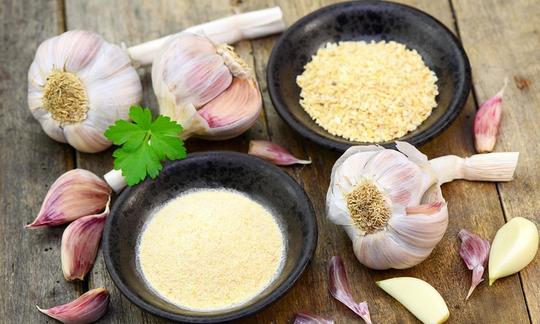

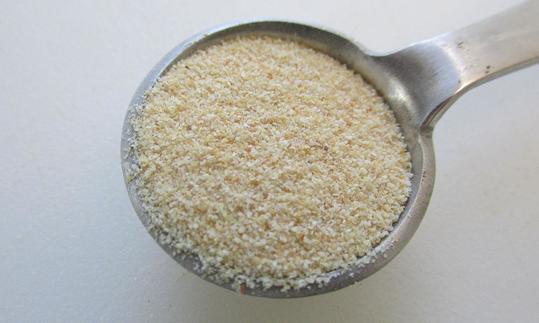

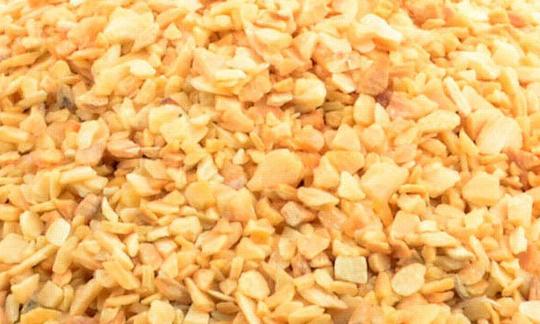

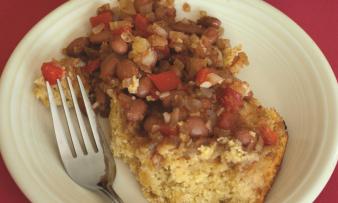
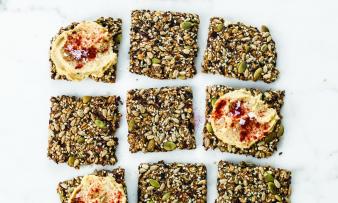
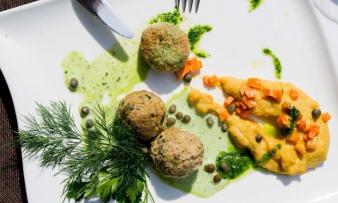


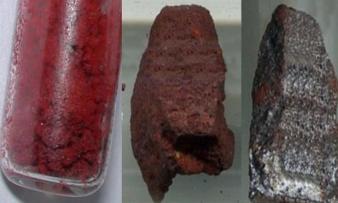


Comments